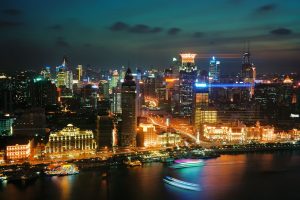The following observations are by Reynolds Center President Andrew Leckey, who has visited China numerous times.
BEIJING—The sights and sounds of a booming, brash, somewhat ominous Chinese double-digit economy had been a compelling sell to the viewers of western broadcast media.
But a “New Normal” of around 7 percent GDP growth relentlessly touted by the Chinese government? Not so much.
Surprised by this retreat from unparalleled growth, western broadcasters have been scrambling for appropriate visuals in 2015 and preoccupied with potential effects on other countries and industries.
Incredulity was expressed by CNN Money anchor Christine Romans in a March 5 television commentary that flashed huge GDP numbers onto the screen as she spoke:
“7 percent! How in the world can 7 percent growth be a bad thing?” Romans asked. “Well, when everyone was really hoping for 7.5 percent in the world’s second largest economy. Some perspective here: Europe would love 7 percent growth. It is expected to grow a measly 1.2 percent this year.”
With Europe “on crutches” and China “slowing from a sprint to a run,” Romans said a likely 3.6 percent economic growth rate predicted for a U.S. shaking off recession feels rather reassuring.
And then there are the all-important visuals.
Colorful video and gleeful sounds of a happy Chinese family enjoying a fast group trip down a recreational ice slide at China’s Harbin Ice Festival led a BBC News broadcast story on Jan. 15. Looked like great fun.
But that slide wasn’t about fun at all. Instead, it was used to symbolize China’s downward economic trajectory. Then the story switched to video of a dark and hazy Harbin sky as it warned of pollution, real estate issues and a cutback in lavish spending by government officials.
The transition from China’s Miracle Economy to New Normal carries risk, BBC China editor Carrie Gracie cautioned in a voice far from festive.
Having spent considerable years as a television anchor covering business and the economy, I know economic numbers can draw immediate viewer attention. And no numbers are more closely watched than China’s, even if their validity is sometimes questioned.
There has been a flood of numbers on the air seeking clues to the realities behind this New Normal. A Bloomberg News broadcast on April 15 featured chart after chart of worrisome Chinese indicators, including lackluster domestic spending. Turning to longer-term stock market prospects, economics editor Michael McKee said the New Normal’s underlying trends are “certainly not the market bull’s friend.”
What matters most to western broadcast media is how China’s New Normal will affect industries and companies that matter the most to its viewers.
Cars and more cars, presenters and dancers were the focus at the giant Shanghai auto show covered by Financial Times correspondent Tom Mitchell in his April 22 video report.
“The phrase on everyone’s lips at Auto Shanghai this year is the New Normal,” said Mitchell. “As a result, multi-national companies anticipate that automotive sales in China will grow by less than 10 percent for the first time in many years.”
Mitchell introduced CEOs who made a game attempt at optimism. For example, Volvo CEO Hakan Samuelson said bravely, “This is probably the New Normal that you will have to accept—the higher single-digit growth as high growth.” Jacques Daniel, chairman of Dong Feng Renault offered hope with, “I don’t think it is such a major issue—it is still growth.”
Following several years of unusually weak economies in Europe and the U.S., coupled with a dramatically robust Chinese growth, western media commentators have wondered aloud if anything can truly be considered normal at all. And if numbers slide to 5 or 6 percent GDP growth, would that then become abnormal?
China’s economy has powerful impact on the world and its longer-term growth will no doubt still turn out to be impressive. But for Western viewers accustomed to thrilling reports of a Chinese economic skyrocket, these earthbound results and forecasts lack drama.
The role of business journalists for the remainder of 2015 will be to carefully track the realities behind China’s economy and follow its effects, rather than dwell on slogans that can come and go. Of course, coverage of China’s economy, centered as it is on global power and politics, has never tilted toward the side of logic.










